Leader : Helena Crouch
Nine members awaited the leader on a fine afternoon, busily spotting insects and interesting plants on the verges of the layby by the A46. There are fine displays of Pyramidal Orchids (Anacamptis pyramidalis) and Common Spotted Orchids (Dactylorhiza fuchsii) here, and brilliant pink flowers of Grass Vetchling (Lathyrus nissolia).
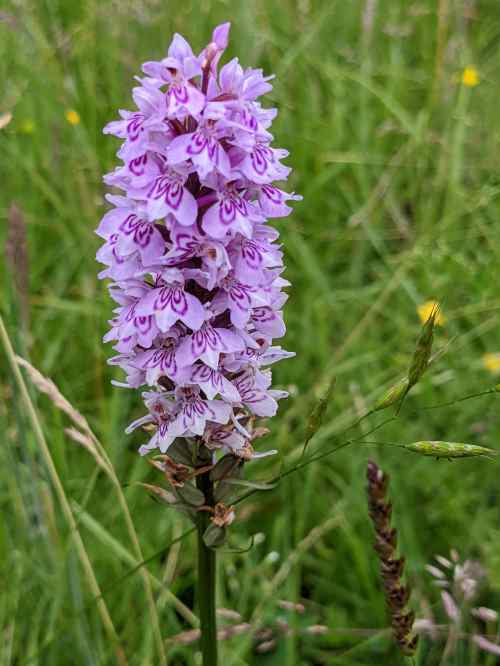
Common Spotted Orchid © Roy Mitchell
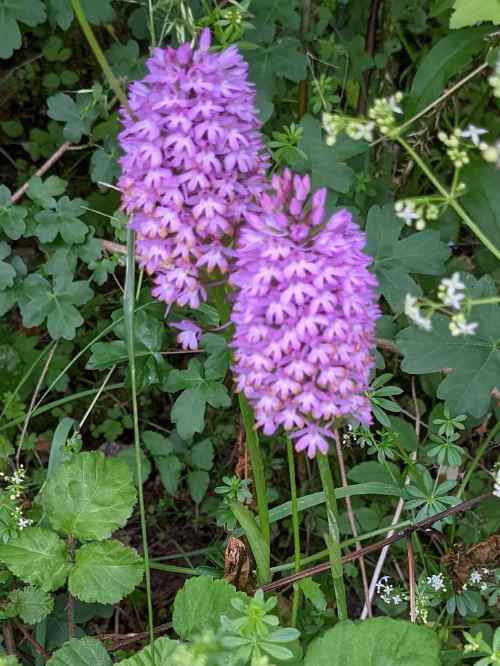
Pyramidal Orchids © Roy Mitchell
Setting off uphill, we passed through a species-rich meadow, seeing more Pyramidal and Common-spotted Orchids, with many butterflies on the wing, including Marbled White, Meadow Brown and Ringlet.
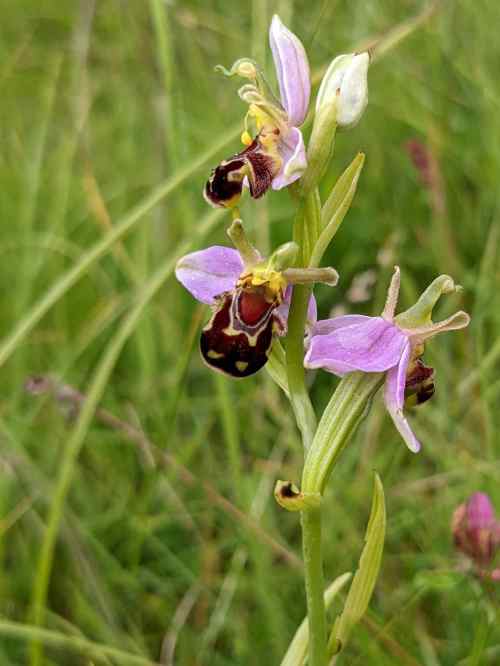
Bee Orchid on Solsbury Hill © Helena Crouch
Ascending the ramparts of the hillfort, we stopped to admire some Bee Orchids with atypical markings Ophrys apifera var. belgarum); further up we saw some normal ones (var. apifera).
The steep slopes around the outer rim of Little Solsbury Hill support a rich flora: the top plateau comprises improved pasture. We therefore circumnavigated the hillfort, exploring some rock outcrops on the outer ramparts. We studied several members of the pea family, finding Bird’s-foot Trefoil (Lotus corniculatus), Black Medick (Medicago lupulina) and both Red and White Clover (Trifolium pratense and T. repens) in grassland, then the much rarer Rough Clover (T. scabrum) growing on rocks. On the south-facing slopes we found a patch of Common Restharrow (Ononis repens) with pink “pea” flowers.
In a flush on the north-facing slope we added Strawberry Clover (T. fragiferum) to our list, although sadly it was not yet flowering. It will have pretty pink heads of flowers, then in fruit the calyces become inflated, producing swollen fruiting heads reminiscent of strawberries.
Small Scabious (Scabiosa columbaria) was just beginning to flower on the rock outcrops and Yellow-rattle (Rhinanthus minor) was growing by the path. This hemi-parasitic species helps to create a diverse sward by preferentially parasitising the more vigorous species of grass, although it will in fact parasitise a wide range of species, including itself! At the base of one rock outcrop, Marion showed us the rather rare Curving Feather-moss (Scorpiurium circinatum).
A bright pink-flowered rose caught our attention: Rob explained the features which make this the Short-styled Field-rose (Rosa stylosa). It has distinctively large green leaves and a strongly conical disc in the centre of the flower, through which the styles emerge as a thick column. We also saw Dog Rose (R. canina) and Field Rose (R. arvensis). During the walk, we studied a range of thistles. In addition to the very common Creeping Thistle (Cirsium arvense) and Spear Thistle (C. vulgare), we found Stemless Thistle (C. acaule), Marsh Thistle (C. palustre) and a spectacularly large Woolly Thistle (C. eriophorum). Nodding Thistle (Carduus nutans) was just beginning to flower. All thistles provide an excellent nectar source for insects and are hence very attractive to butterflies.
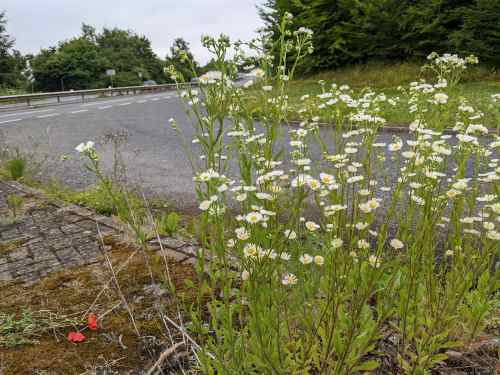
Tall Fleabane by the A46 © Helena Crouch
Having admired the views across Bath, and stoically ignored a light shower of rain, we completed our circumnavigation of the hill fort and returned downhill. In the hedgerow, we noted several mature Smooth-leaved Elms (Ulmus minor) which need further study. Back at the lay-by, Rob showed us Tall Fleabane (Erigeron annuus) which he had recently spotted growing on the traffic island by the A46. This is only the third occurrence of this North American species in Somerset and the first for the Bath area.
In some European countries this attractive species can be an invasive weed, so we may be finding it elsewhere soon. This discovery demonstrated that even at a well-known site, there is always something new to see!
Helena Crouch

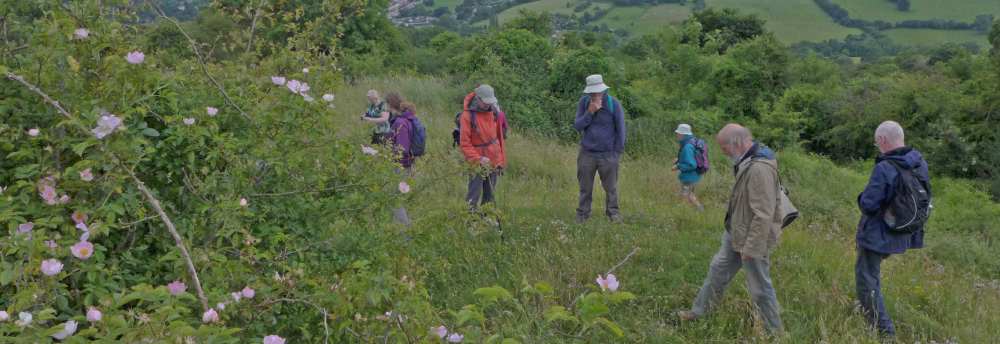
Recent Comments